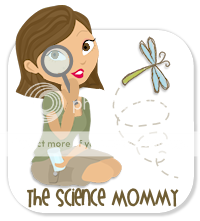Ages: This model is best for Big Kid Scientists
Materials: Clear glass, flashlight, eye dropper, water, milk, white paper
Procedure:
- Fill the cup with water
- Fold the white paper in half (like a tent) and place it behind the cup
- Shine the flashlight through the water, onto the paper. What do you notice?
- Think about the parts of this model. If the cup of water represents the atmosphere, what does the flashlight represent? How about the white paper?
- Add 3 to 5 drops of milk to the water. Shine the flashlight through the liquid, onto the paper. What do you notice now? What does the milk represent?
- Continue adding drops of milk and observing both the liquid and the reflected light on the paper.
For Science Moms Only...
The atmosphere that wraps around Earth is a blanket of invisible gases. The atmosphere also has many particles, too small to be seen but big enough to scatter light waves. Blue and violet light scatter the most; orange and red scatter the least. At midday the sun is high in the sky so less light is scattered and more blue light reaches your eyes. When the sun is low in the sky at sunrise or sunset, the rays travel through a thicker layer of atmosphere. The blue waves are scattered and the longer red wavelengths reach your eyes, giving us red sunsets. Dust or smoke particles will enhance the red and orange colors.




























0 Science Moms have commented...:
Post a Comment